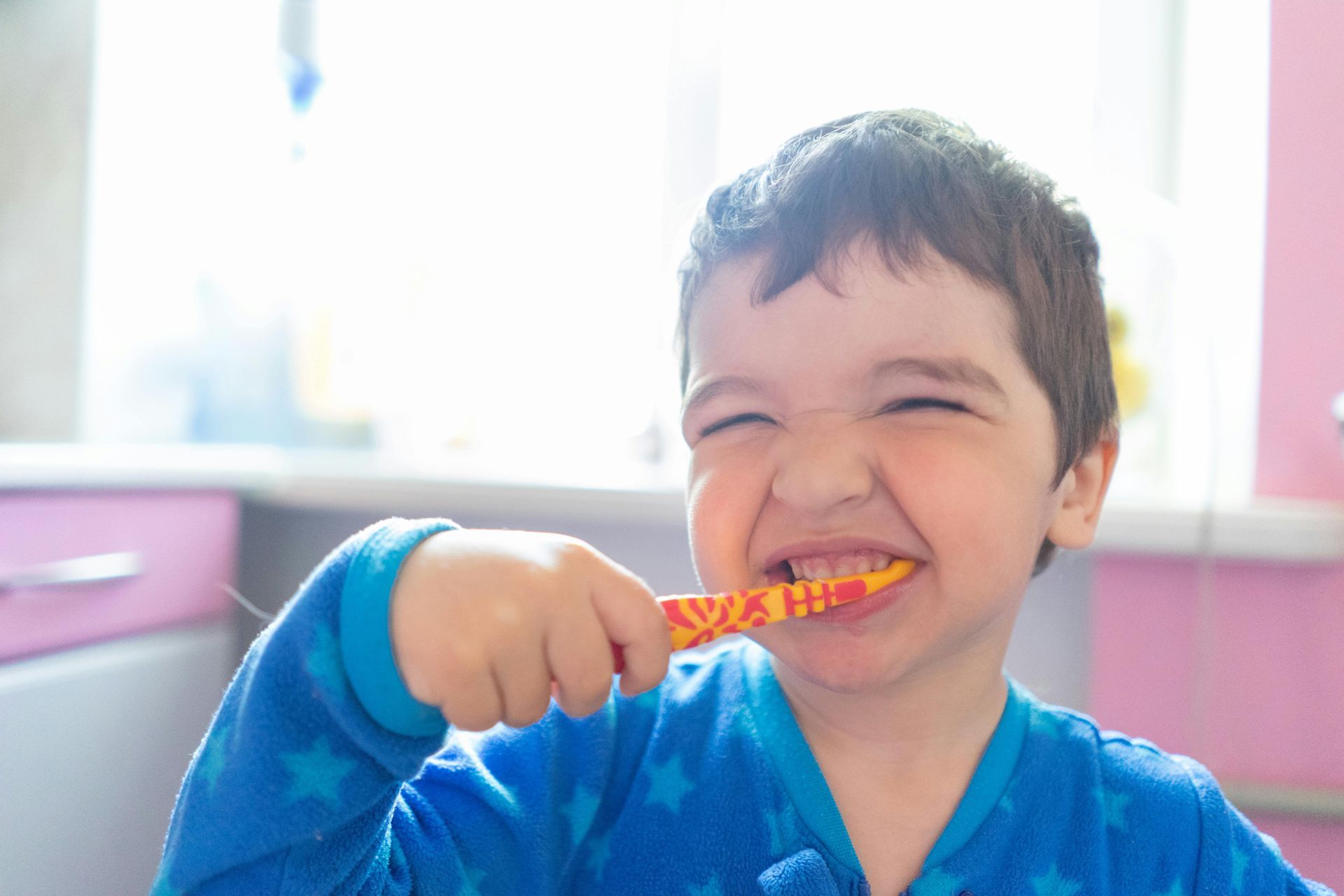Understanding Stimulus Discrimination in Families with Children Diagnosed with Autism Spectrum Disorder
Understanding Stimulus Discrimination in Families with Children Diagnosed with Autism Spectrum Disorder
Families with children diagnosed with Autism Spectrum Disorder (ASD) navigate a unique landscape of learning, adaptation, and support. One of the fundamental concepts that can significantly impact a child's learning and behavior is stimulus discrimination. This concept, rooted in behavioral psychology, plays a crucial role in how children with ASD respond to different stimuli in their environment and how parents, caregivers, and educators can facilitate meaningful learning experiences. Understanding stimulus discrimination and its practical applications can improve intervention strategies and promote skill acquisition for children with ASD.
Defining Stimulus Discrimination
Stimulus discrimination refers to the ability to differentiate between similar but distinct stimuli and respond appropriately to each (Cooper, Heron, & Heward, 2020). In applied behavior analysis (ABA), stimulus discrimination occurs when a child learns to exhibit a specific response in the presence of one stimulus but not in the presence of another. For example, a child with ASD might learn to say “hello” when seeing their teacher but not when encountering a stranger. The ability to discriminate between different stimuli is essential for functional communication, social interactions, and safety.
For children with ASD, stimulus discrimination can be challenging due to difficulties with generalization and flexibility in responding to various environmental cues (Bouton, 2018). These challenges can manifest in different ways, including rigid adherence to routines, difficulty transitioning between activities, or an inability to recognize subtle social cues. Through structured interventions and consistent reinforcement, children with ASD can develop better discrimination skills, leading to more adaptive and socially appropriate behaviors.
Examples of Stimulus Discrimination in Daily Life
Parents of children with ASD often encounter situations where stimulus discrimination plays a key role in shaping behavior. One common example is learning to respond to different social greetings. A child may initially respond to “hi” when spoken by their parents but fail to respond when a peer greets them in the same way. Through discrimination training, parents and therapists can help the child recognize that “hi” is an appropriate greeting regardless of who says it. By reinforcing the correct response in a controlled setting, the child can gradually generalize this skill across different individuals and settings.
Another example of stimulus discrimination involves safety awareness. Many children with ASD have difficulty understanding which individuals are safe to approach and which should be avoided. For instance, a child might be taught to accept a hug from a parent but refrain from doing so with strangers. Teaching discrimination between safe and unsafe individuals requires clear, consistent reinforcement of appropriate behaviors. Visual supports, social stories, and role-playing scenarios can all be effective tools in promoting safety-related stimulus discrimination (Leaf et al., 2016).
Stimulus discrimination is also relevant in academic settings, where children must learn to distinguish between similar concepts. A child learning to read may need to discriminate between the words “bat” and “cat,” which share visual similarities. For children with ASD, who may struggle with phonemic awareness, structured interventions such as phonics-based instruction and visual prompts can facilitate discrimination between words (Sundberg & Michael, 2001).
Strategies to Enhance Stimulus Discrimination
Several evidence-based strategies can help children with ASD improve their ability to discriminate between stimuli. One effective approach is differential reinforcement, which involves providing reinforcement for correct responses while withholding reinforcement for incorrect ones (Cooper et al., 2020). For example, if a child is learning to identify colors, they might receive praise and a preferred item when correctly labeling “red” while no reinforcement is provided for incorrect responses. Over time, this process strengthens the association between the correct response and the corresponding stimulus.
Errorless learning is another powerful technique used to promote stimulus discrimination. This approach involves minimizing errors by providing immediate prompts and gradually fading them as the child gains mastery (Mueller, Palkovic, & Maynard, 2007). For example, when teaching a child to respond to their name, a therapist might initially prompt the child by lightly tapping their shoulder while calling their name. As the child learns to respond, the prompt is gradually faded until they reliably react to their name without additional cues.
Visual supports, such as picture schedules and cue cards, can also enhance stimulus discrimination by providing clear, concrete representations of expected behaviors. For children with ASD, who often struggle with processing verbal instructions, visual aids serve as a helpful bridge between language and behavior (Ganz, 2007). A child learning to differentiate between indoor and outdoor play behaviors, for example, might benefit from a visual cue that illustrates appropriate activities for each setting.
Challenges and Considerations
Despite the effectiveness of these strategies, parents and educators should be mindful of potential challenges when teaching stimulus discrimination. One common issue is overselectivity, where a child fixates on an irrelevant feature of a stimulus rather than its defining characteristics (Lovaas, Schreibman, & Koegel, 1974). For instance, a child learning to identify a stop sign may focus on its color rather than its shape and wording. In such cases, incorporating multiple exemplars and varying instructional materials can help the child learn to discriminate based on relevant attributes.
Another challenge involves ensuring generalization, or the ability to apply learned discrimination skills across different contexts. A child who learns to greet their teacher appropriately may struggle to extend this behavior to other adults. To promote generalization, interventions should incorporate multiple environments, people, and variations of the stimulus to ensure flexible and adaptive learning (Stokes & Baer, 1977). Reinforcing correct responses in naturalistic settings, such as during community outings or playdates, can further enhance the child’s ability to generalize discrimination skills.
Conclusion
Stimulus discrimination is a fundamental concept in behavior analysis that has significant implications for children with ASD and their families. By learning to differentiate between stimuli and respond appropriately, children can develop essential skills for communication, safety, and academic success. Parents, educators, and therapists play a critical role in facilitating this learning process through structured interventions, reinforcement strategies, and individualized support. While challenges such as overselectivity and limited generalization may arise, consistent and evidence-based approaches can help children with ASD build meaningful and adaptive discrimination skills. Through ongoing support and intervention, families can empower their children to navigate the complexities of their environment with confidence and independence.
References
Bouton, M. E. (2018). Learning and behavior: A contemporary synthesis. Sinauer Associates.
Cooper, J. O., Heron, T. E., & Heward, W. L. (2020). Applied behavior analysis (3rd ed.). Pearson.
Ganz, J. B. (2007). Effectiveness of visual symbols to increase social-communication skills in children with autism. Focus on Autism and Other Developmental Disabilities, 22(3), 179-187.
Leaf, J. B., Oppenheim-Leaf, M. L., Leaf, R., Courtemanche, A. B., Taubman, M., McEachin, J., & Sheldon, J. B. (2016). The use of social stories in applied behavior analysis: A systematic review. Research in Autism Spectrum Disorders, 27, 1-10.
Lovaas, O. I., Schreibman, L., & Koegel, R. (1974). A behavior modification approach to the treatment of autistic children. Journal of Autism and Childhood Schizophrenia, 4(2), 111-129.
Mueller, M. M., Palkovic, C. M., & Maynard, C. S. (2007). Errorless learning: Review and practical application for teaching children with pervasive developmental disorders. Psychology in the Schools, 44(7), 691-700.
Stokes, T. F., & Baer, D. M. (1977). An implicit technology of generalization. Journal of Applied Behavior Analysis, 10(2), 349-367.
Sundberg, M. L., & Michael, J. (2001). The benefits of verbal behavior analysis for children with autism. Behavior Modification, 25(5), 698-724.











